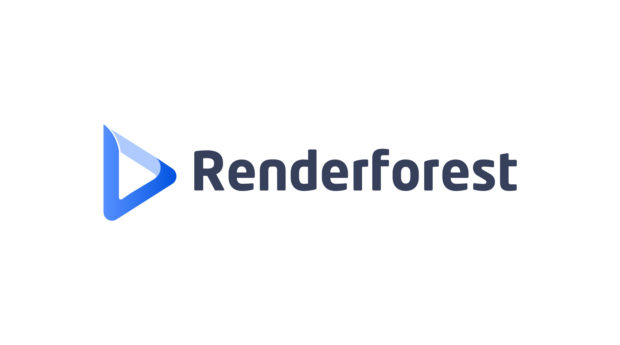They say video killed the radio star – but when the Internet came along, everything was turned upside down. While back in the 90s you might have gotten away with a small business without any kind of digital presence (not even an inquiry email address!), these days, it’s practically impossible to survive as a business without a minimum amount of digitalization in your blood.
And yes, that does include a Facebook account, and maybe even an Instagram one, it does include a basic site, and maybe even a blog, and it does include proper customer service throughout all of your communication channels.
Twenty years ago, you could get away with just a pack of business cards and a sketchy banner stretched out on your front store.
Today, you need to be everywhere – digital or not.
And more importantly, you need to make sure you are recognized everywhere as well.
Branding, enter stage!

What Is Branding and What’s a Logo?
You hear it everywhere – this brand does that and this other brand does that other thing.
But few people actually understand the meaning (and the importance!) of branding.
Put in very simple terms, branding is the totality of the actions you take as a business to project a very specific image. Everything associated with your company name should be branded – the Facebook posts, the posters in your physical store, your website’s pages, your business cards, and so on.
And one of the first and foremost important means of branding your business is by associating it with a logo.
Logos can be either just alphanumeric (e.g. Google’s logo), or they can include some sort of imagery as well (e.g. Nike’s logo). Generally speaking, studies show that logos based on images tend to have a higher impact on consumers.
A logo can be consisted of pretty much anything under the sun – from simple lines and symbols to icons very tightly connected to your business. Sometimes, the logo imagery has no apparent relation to the actual nature of a business. Take Starbucks, for example. If you look at their logo, you will discover that it centralizes the image of a siren – which doesn’t seem to be related any way, shape to coffee.
And it isn’t. The original founders of Starbucks (all three of them involved with literature) named their coffee bean shop after Captain Ahab’s first mate, Starbuck (yes, the Moby Dick Captain Ahab) – and it kind of made sense to center their logo after a mythical marine character.
It worked. Today, Starbucks’ world revenue has long reached past the $24 billion threshold. That doesn’t mean you should go with the same strategy, though – it’s just an example that rules have been broken and that it worked out very well.
Apple is another famous example of how breaking the rules can lead to winning the game. As the story goes, Steve Jobs picked this name (and correlated logo) for his business because it was simple. Everyone knows what an apple is, right? So why not associate your company with something as easy to remember and as widespread as the most common fruit in the Northern Hemisphere?
So, What Are the Rules of Creating a Good Logo?
Of course, there are entire libraries written on how to create a logo.
What we described in the previous paragraphs is the mindset you should have when you start to design your logo (and when you want to do it like a pro).
What we will describe in the following tips are the basic rules and “technicalities” of creating a professional-looking logo.
Before we dive into that, though, please keep in mind that you don’t need to learn how to work with Photoshop, Illustrator, or any of the similar image editing software applications. Of course, you can do that – but if you’re short on time and your budget is tight, you can do very well with an online logo maker.
Here are some of the simple tips you should follow:
- Simplicity is key. Make your logo as simple as possible and as minimalist as possible – it’s far easier for the human brain to remember a simple icon than to remember a complex image. Yes, the human brain can process imagery hundreds of times faster than it can process texts – but if you want to reap all the benefits of the marvelous ways the human brain works, you need to minimalize your logo’s complexity to the point where everyone can remember it.
- Use your brand colors. Generally, it is not a good idea to use too many colors for your logo (or anything brand-related). Think of the most famous brands in the world and you will see that they only use two, maybe three colors (the old, rainbow-colored Apple logo is an exception to this rule, but even they changed it to something far simpler and easier to remember).
- Planning to include text in your logo too? That’s perfectly OK, but please do make sure you use a font that’s representative for your business. For instance, if you own a German car dealership, a very intricate font will most likely not appeal to your target audience (which is most likely consisted of wealthier men, aged between 30 and 50, for example).
- A touch of humor and/or wittiness can go a long way. Amazon is a famous example here. When you look at their logo, you will see that the arrow under their name (which is also the only actual image in their logo) can be interpreted as a symbol for “delivery”, but also as a smile.
- Think out of the box. We live in a day and age when everything has been said and done – and sometimes, breaking the rules can actually help. However, please keep in mind that the rules we have relayed here are at the very foundation of what a good logo should be like – and breaking them might not be a great idea if you want to pull off something that actually does the job: making your brand easy to recognize in a variety of environments and channels of communication.
- Make sure your logo is created as a vector image – this will allow you to add it on every single type of marketing material from hereon, without risking quality issues when you have to resize it. A vector image will look the same no matter how stretched out or minimized it is!
Once you have all these basics set, proceed to use your Renderforest logo maker:
- Enter your company’s name;
- Choose your preferred font(s);
- Choose your icon style from the variety of options provided by the logo creation tool;
- Customize and adjust your logo to make it unique.
Keep in mind that changing the logo of a business is possible (as part of a rebranding effort, for example) – but most businesses avoid doing this because it could harm their image, rather than improve it. Even when this does happen, logos are almost never changed 100% – adjusts are made in the style, fonts, and colors, but the main image/ text remains the same in 99% of the cases.
Your logo is more than just an image you splash on your website and Facebook profile picture. Its symbolism lies at the very core of what your business is all about. Even more than that, a logo is forever – so take your time with the decisional process behind your logo creation and proceed to action when you have all the basics all set up. Renderforest is always there to ease your work!
————————
Bio: I am the Chief Marketing Officer at Renderforest, a Content Marketing Specialist and an Expert in SEO, Social Media Marketing, and Link Building who enjoys sharing the experiences gained along working as a marketer and helping other entrepreneurs succeed.
My works have been published on different blogs and mediums like Crazy Egg, Forbes, Upwork, ShareThis, etc.
Twitter: https://twitter.com/roman_daneghyan?lang=en



